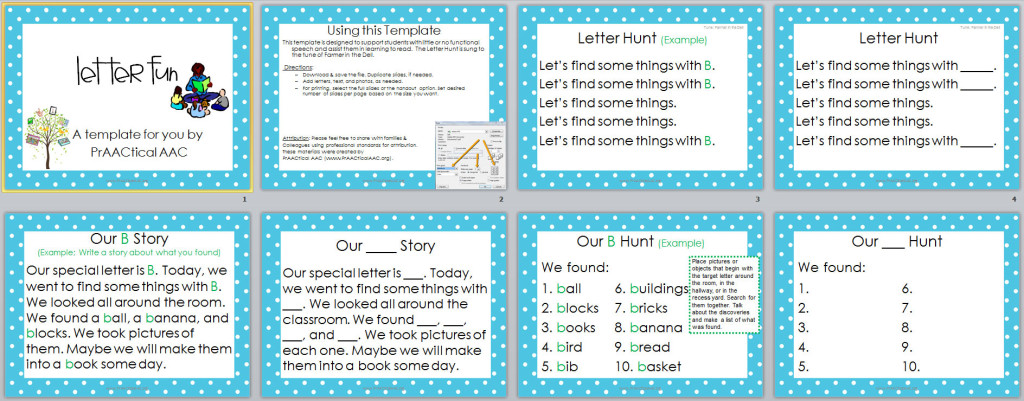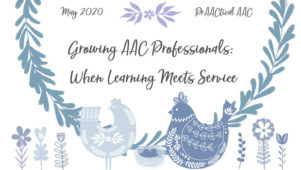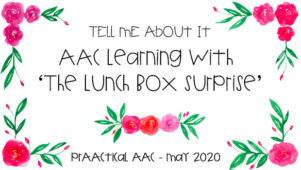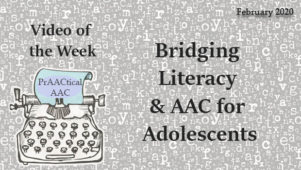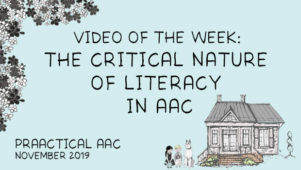A PrAACtical Literacy Activity for Beginning Communicators
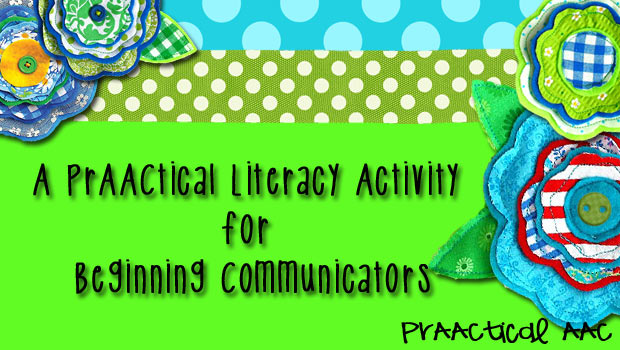
We’ve been having a great time supporting beginning communicators and gently modeling how they can be involved in literacy learning activities. In this post, we share a super simple activity to build alphabet knowledge and letter-sound correspondence. It has worked well (or fairly well) for beginning communicators who:
- Are just learning to establish cause-effect relationships
- Have little interest in existing classroom alphabet activities
- Are verbal, but reluctantly
- Are reluctant participants in group activities and seem to prefer being alone
- Have no formal AAC system, but would benefit from one
- Treat books and other printed materials as objects to spin, rip, or throw
- Have not been given the opportunity to participate in traditional literacy instruction.
We love it because:
- It is is quick and easy.
- It requires almost no advance planning other than having a camera (or one on your phone/mobile device)
- Other people in the classroom notice us doing real literacy work with kids they may not have thought capable of learning alphabet skills
- We can repeat it with different items or letters to build familiarity with the activity and skills
It’s easy to do. Here are the steps.
- Pick a target letter and/or letter-sound
- Have the student go around the room with you looking for things that start with that letter/sound
- Talk about what you find, highlighting the letter/sound
- Together, take a picture of that item.
- If you’re feeling adventurous, you can embellish the activity by:
- Taking the letter (e.g., a big L) with you on the search
- Adding a song or chant (write out and take with you). You can download our sample in the Letter Fun packet. If you print and laminate it, you
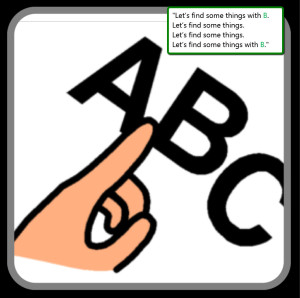 can use a dry erase marker to add the target letter, names, etc.
can use a dry erase marker to add the target letter, names, etc. - Using the student’s AAC system to practice core vocabulary, label objects, or say the letter/sounds
- Adding a mini-schedule of the steps of the activity
- Putting the photos into an alphabet book. (Here’s a PowerPoint template for you to use.) Have the student help you caption the photos and/or write his/her name as an author. Print it for the class library or to send home. Read it on the computer.
- Making a list of the things you found
- Writing a story about the activity (e.g., “Jonah and Dr. Z had a B. It was the Letter of the Week. They went to find B things. They wanted to take pictures of the B things. They found a bear. They found a book. They found…”)
- Programming a talking switch with the letter/sound or chant (like we did in the image shown using the TapSpeak Sequence app).
It works best when the implementer is enthusiastic and has built some trust with the learner. You can get the packet below or in the eToolbox.
Filed under: PrAACtical Thinking
Tagged With: literacy
This post was written by Carole Zangari
